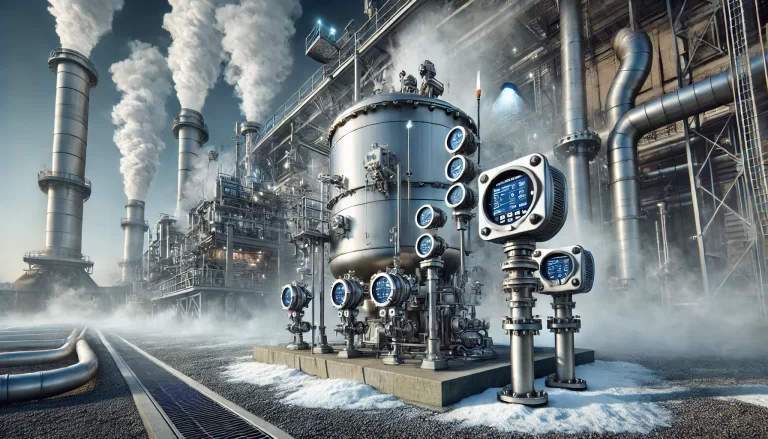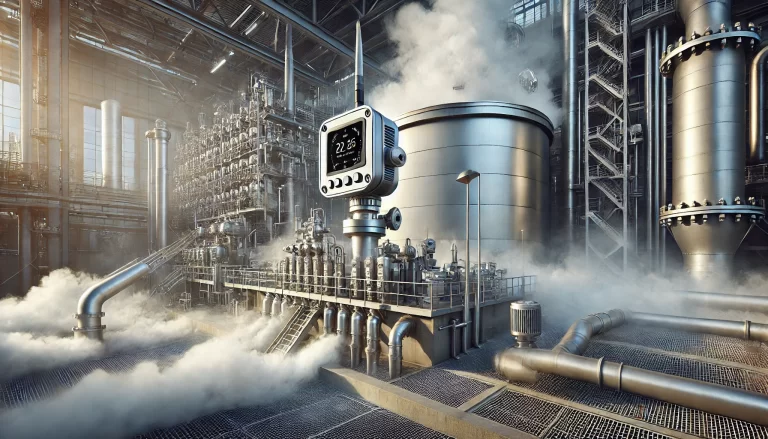Radar level meters are widely used in liquid and slurry level measurement due to their high accuracy, stability, and ease of maintenance. However, when it comes to high-temperature water measurement, traditional radar level meters face a series of challenges. This article explores the applications of radar level meters in high-temperature water environments, the challenges they encounter, and potential solutions.
Operating Principles of Radar Level Meters
Radar level meters operate based on the time-of-flight principle. They emit microwave signals and measure the time it takes for the signal to travel to the target surface and return. By calculating the time difference and knowing the propagation speed of the microwaves, the distance between the radar sensor and the target surface can be determined. This method allows for precise liquid level measurement, but unique challenges arise when applied to high-temperature water environments.

Key Challenges in High-Temperature Water Measurement
Steam Interference:
- High-temperature water generates significant amounts of steam, which can scatter and absorb radar waves. This interference degrades signal quality and leads to measurement inaccuracies.
Material Degradation:
- The high-temperature environment can damage the materials used in radar level meters, especially sealing components and connectors. This may result in leakage or reduced performance.
Installation Limitations:
- Due to the extreme heat, radar level meters cannot be directly mounted in areas exposed to high temperatures. Improper installation can lead to equipment failures or inaccurate readings.
Strategies to Overcome Challenges
To address these issues, several strategies can be employed:
Using Guided Wave Radar Level Meters:
- Guided wave radar meters utilize a probe, such as a rod or cable, installed inside the container. Microwaves propagate along this guide, minimizing the impact of steam on signal quality. This approach enhances measurement accuracy and reliability in high-temperature environments.
Selecting High-Temperature-Resistant Materials:
- For applications in high-temperature environments, components such as probes, seals, and connectors should be made of materials like stainless steel or specialized alloys. These materials offer high resistance to heat and corrosion, ensuring long-term operational stability.
Optimizing Installation Design:
- To prevent direct exposure to high heat, radar level meters can be installed with extended pipes or cooling mechanisms. These designs reduce the temperature around the device and protect sensitive components from thermal damage.
Practical Applications: A Case Study
In a thermal power plant, radar level meters were employed to monitor the water levels in a high-temperature steam drum. The initial installation faced significant challenges due to steam interference and material degradation. By switching to guided wave radar meters and replacing standard seals with heat-resistant alternatives, the plant achieved:
- Improved Accuracy: Measurement errors caused by steam interference decreased by over 30%.
- Enhanced Durability: Upgraded materials withstood high-temperature conditions without significant wear over an extended period.
- Cost Efficiency: Maintenance and replacement frequency decreased, reducing operational costs.
This case highlights the importance of tailored solutions for challenging measurement environments.

Future Developments in Radar Level Measurement
With advancements in materials science and electronics, the future of radar level meters promises enhanced adaptability for extreme conditions. Key developments include:
- Innovative Materials:
- The integration of high-temperature ceramics or advanced composites could further improve device resilience in extreme heat.
- Smart Algorithms:
- Signal processing algorithms capable of compensating for steam interference could significantly enhance measurement reliability.
- Integration with IoT:
- Real-time monitoring and predictive maintenance enabled by IoT integration could ensure optimal performance and reduce downtime.
Conclusion
While the application of radar level meters in high-temperature water measurement poses significant challenges, innovative technologies and strategies can address these issues effectively. Guided wave radar meters, high-temperature-resistant materials, and optimized installation techniques play critical roles in overcoming these obstacles. With ongoing advancements, radar level meters are poised to meet the demands of even the most extreme environments, contributing to the evolution of industrial automation and operational efficiency.
